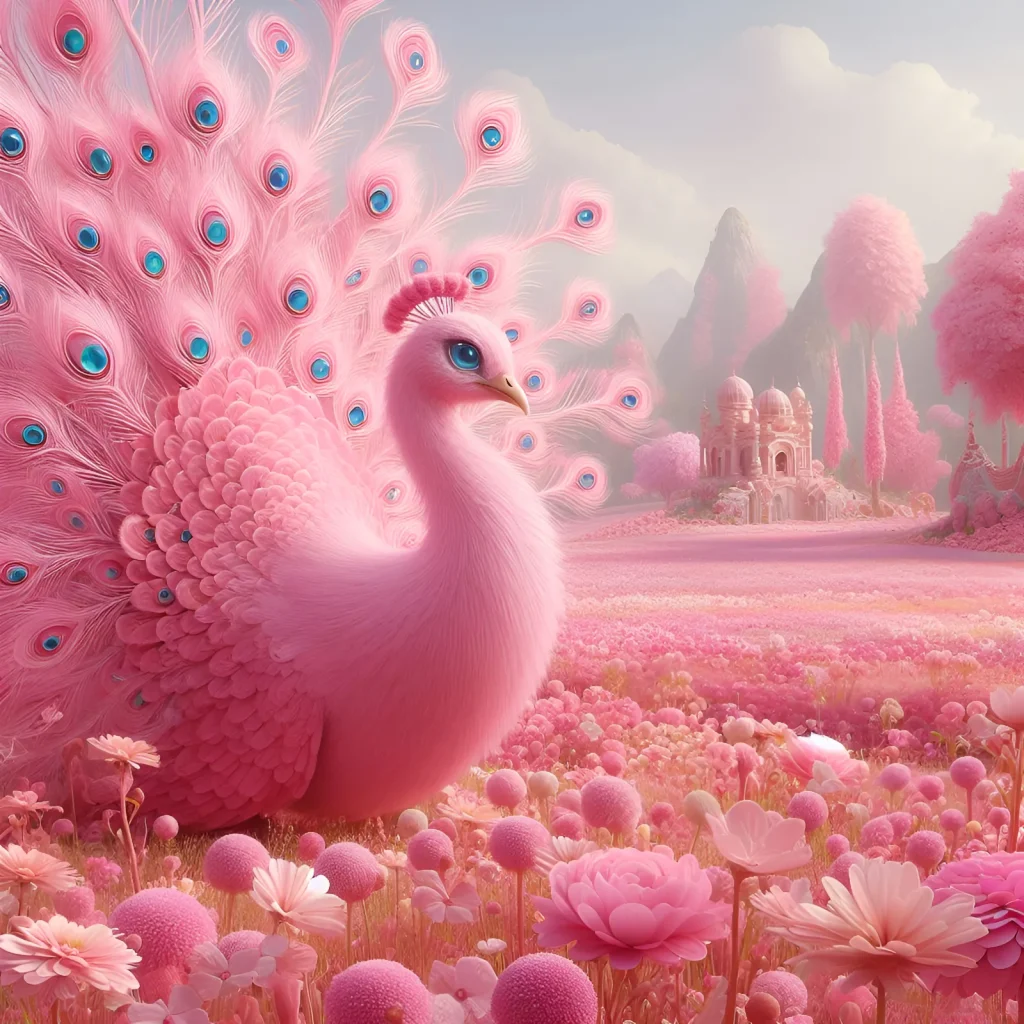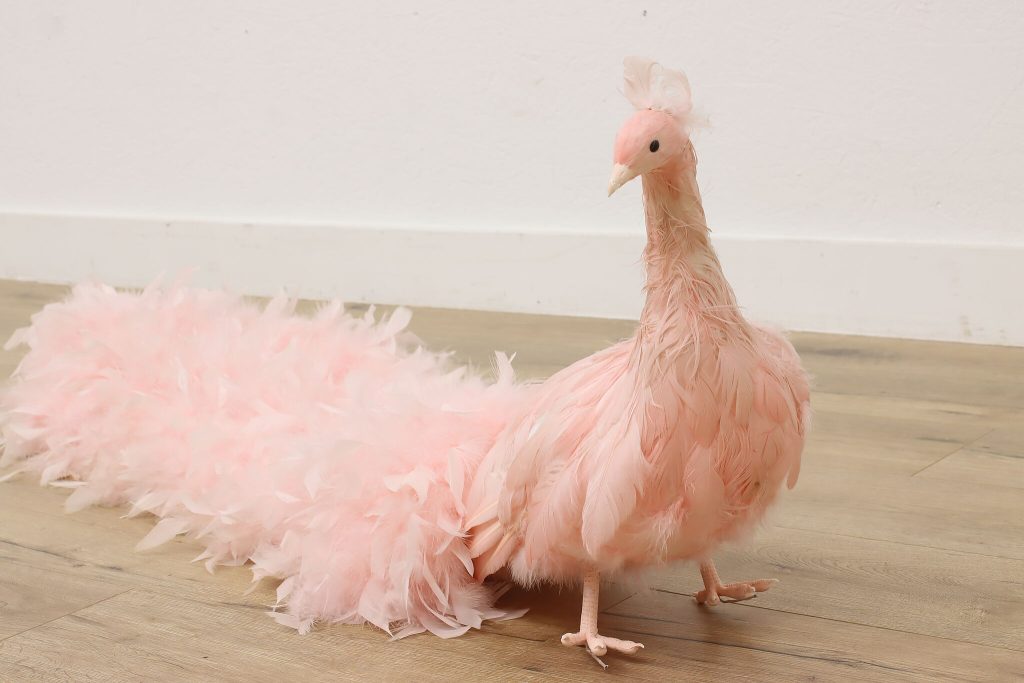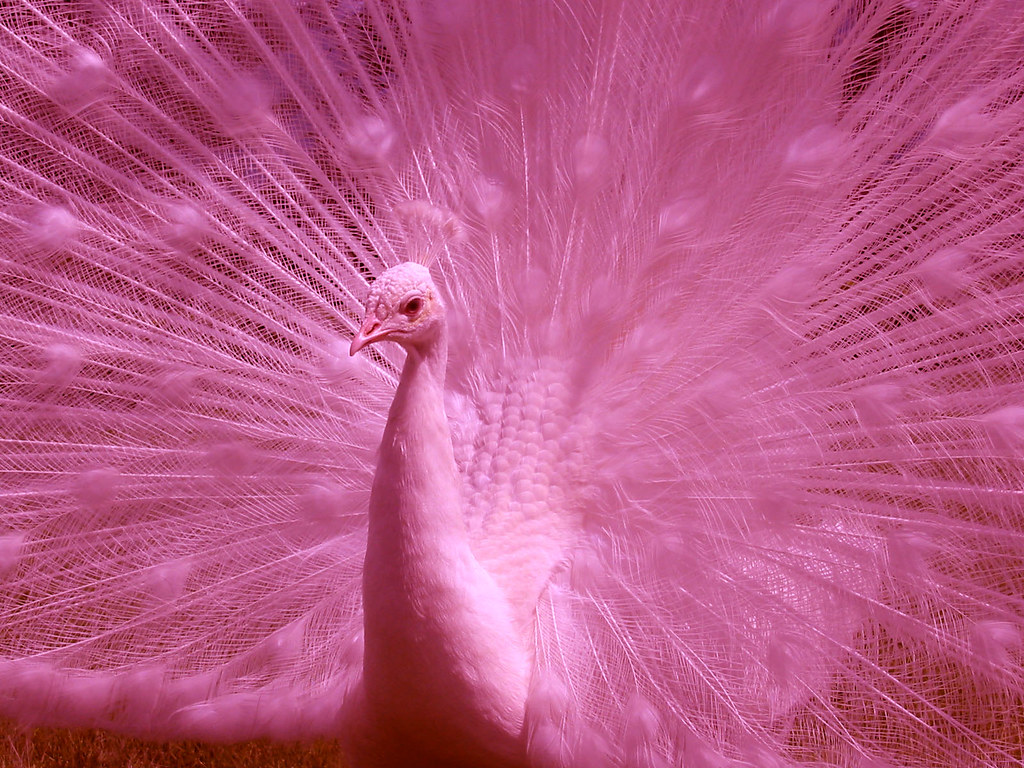Could it be true? Is there really a pink peacock with feathers in shades of soft pink and white, unlike any other? Often believed to be mythical, pink peacocks do exist—though not naturally. These stunning birds are the result of selective breeding, a process managed by aviculturists to achieve their unique coloration. Unlike the Indian Blue Peafowl found in the wild across the Indian subcontinent, these peacocks owe their existence to a rare genetic mutation affecting melanin production. While some might assume these birds are a natural phenomenon, it’s important to understand that their striking appearance is entirely manmade and they don’t exist naturally. Breeding such peacocks requires precise genetic selection and meticulous care, often in controlled environments like zoos and private aviaries.
This article explores the myths and cultural stories involving peafowl from various traditions around the world. Learn about the different types of peafowl, and where you can find these magnificent birds, this article covers everything you need to know about peafowl and their captivating beauty.
Revealing the Truth About Pink Peacocks

The existence of pink peacocks has often been questioned and debated. Upon examining the potential and supporting data, it is clear that while they are not naturally occurring in the wild, their existence is not impossible. Instead, pink peacocks are a result of selective breeding by aviculturists who aim to create unique and beautiful variants of the Indian Blue Peafowl.
Manmade Marvels
- Genetic Mutation: Pink peacocks are created through a specific genetic mutation affecting melanin production. This mutation is carefully bred and maintained by aviculturists.
- Selective Breeding: Breeders have developed these birds over time to achieve the desired pink and white feather coloration.
- Real and Tangible: Unlike mythological creatures, pink peacocks are genuine and can be seen in certain zoos and private collections worldwide.
Interesting Facts About Pink Peacocks

-
Feather Structure
The vibrant pink and white feathers of pink peacocks are iridescent due to structural coloration. This means that their feathers have microscopic structures that reflect light in unique ways, creating their stunning appearance.
-
Courtship Displays
Male pink peacocks fan out their extravagant tails adorned with eyespots during courtship displays to attract potential mates. This visual spectacle plays a crucial role in their mating rituals.
-
Social Structure
Pink peacocks, like other peafowl, often live in social groups known as ostentations or musters. These groups usually consist of multiple females and a dominant male, providing social and protective benefits.
-
Flying Ability
Despite their ability to fly, pink peacocks prefer to stay on the ground. They use their flight capability mainly to escape predators or to roost in trees at night for safety.
-
Genetic Rarity
Pink peacocks are a rare color morph of the Indian Blue Peafowl, resulting from a genetic mutation that affects melanin production. This rarity makes them highly sought after and prized in captivity.
These fascinating aspects of pink peacocks highlight their unique beauty and behaviors, making them captivating subjects for both study and admiration.
Cultural Stories and Myths Involving Peacocks
Hindu Mythology
- Kartikeya’s Mount: The Hindu god Kartikeya, the deity of war, rides a peacock named Paravani. This bird symbolizes his triumph over the demon Surapadman.
- Saraswati’s Symbol: The goddess Saraswati, representing wisdom and learning, is often depicted with a peacock. The bird represents patience and knowledge.
- Krishna’s Crown: The god Krishna is frequently shown wearing a peacock feather in his crown, symbolizing his connection with nature and his divine playfulness.
- Peacock and Rain: Peacocks are believed to bring rain and prosperity, often dancing in anticipation of monsoon rains, symbolizing joy and life renewal.
Greek Mythology
- Hera’s Eyes: Peacocks are sacred to Hera, the queen of the gods. According to myth, the eyes on the peacock’s tail feathers represent the hundred eyes of Argus, a giant Hera placed in the bird’s tail after his death.
- Symbol of Pride: Peacocks are often associated with pride and vanity due to their magnificent plumage, reflecting the vanity of gods and mortals alike.
- Peacock Chariot: Hera is sometimes depicted riding a chariot pulled by peacocks, symbolizing her divine status and the watchful eyes of Argus.
- Transformation of Argus: After Hermes killed Argus, Hera took his hundred eyes and placed them on the peacock’s tail as a tribute to her loyal servant.
Chinese Mythology
- Symbol of Beauty and Dignity: In Chinese culture, peacocks symbolize beauty, dignity, and rank. They are often associated with the goddess Guan Yin.
- Representation of the Phoenix: The peacock is sometimes linked with the legendary phoenix, symbolizing resurrection and immortality.
- Peacock and Marriage: Peacocks are also seen as symbols of love and are often featured in wedding ceremonies to represent a happy and prosperous marriage.
- Peacock Feathers for Protection: It is believed that peacock feathers can ward off evil spirits and bring good luck, making them popular in various rituals and decorations.
Persian Mythology
- Bird of Paradise: In Persian mythology, peacocks are seen as birds of paradise, symbolizing immortality and the beauty of the soul.
- Zoroastrian Symbolism: Peacocks are associated with the Zoroastrian religion, symbolizing royalty and eternal life.
- Peacock Throne: The famous Peacock Throne of Persian emperors was named after the bird, symbolizing the power and grandeur of the monarchy.
- Myth of Creation: In some Persian myths, peacocks are considered the first creatures created by God, representing purity and divine beauty.
Spiritual Meaning of Peacock
Peacocks are not only admired for their breathtaking beauty but are also rich in symbolic and spiritual meanings across various cultures and traditions. Here are some of the prominent spiritual significances associated with seeing peacocks:
Symbol of Beauty and Integrity
The vibrant and flamboyant feathers of the peacock symbolize the importance of elf-expression and confidence. Just as the peacock is unafraid to display its beautiful plumage, seeing a peacock can encourage individuals to embrace their own unique qualities and express their true selves without fear.
Spiritual Awakening and Renewal
Peacocks are often seen as symbols of rebirth and immortality. This stems from their annual molting and regrowth of feathers, representing the cycle of renewal and the idea that one can always start anew. In spiritual contexts, encountering a peacock might signify a period of personal growth or a new phase in one’s spiritual journey.
Protection and Guidance
The eye-like patterns on peacock feathers are believed to ward off evil spirits and provide protection. In many cultures, these “eyes” are thought to be watchful, guiding and protecting those who encounter peacocks.
Connection to the Divine
In Hindu mythology, the peacock is associated with several deities. The god Kartikeya is depicted riding a peacock, symbolizing his divine attributes. The goddess Saraswati is also connected to the peacock, representing wisdom and the arts. Seeing a peacock can thus be interpreted as a sign of divine presence and blessings.
Symbol of Vision and Spiritual Insight
Peacocks are often linked to vision and spiritual insight due to their ability to “see” with their many eyes. This can symbolize enlightenment and the ability to perceive truths that are hidden from ordinary sight. Seeing a peacock might be a prompt to trust one’s intuition and seek deeper understanding.
Transformation and Patience
The process by which peacocks grow their feathers and the dramatic display they create is seen as a metaphor for transformation. It encourages individuals to be patient with their own growth and transformation processes, trusting that the outcomes will be beautiful and rewarding.
Diverse varieties of Peacock
Peafowl are known for their extravagant plumage and are primarily of three species: the Indian Peafowl, Green Peafowl, and the Congo Peafowl. Within these species, there are various color morphs and mutations that result in a fascinating array of appearances.
Indian Peafowl (Pavo cristatus)
Also known as the Indian Blue Peafowl, this is the most common and recognized type. Males feature iridescent blue and green plumage with a long, ornate tail adorned with eyespots, while females are brown with a greenish neck. They are native to the Indian subcontinent and are often seen in both wild and urban areas.
Green Peafowl (Pavo muticus)
Known as the Javanese Peacock, this species has metallic green and bronze plumage. Unlike the Indian Peafowl, both sexes look similar, though males are more vibrant. They are native to Southeast Asia, including Myanmar, Thailand, and Java, and prefer forested habitats.
Congo Peafowl (Afropavo congensis)
This smaller peafowl species is native to the Congo Basin in Africa. Males have less extravagant feathers, with more subdued dark blue and green plumage. They differ significantly from their Asian relatives in both size and appearance.
Common Color Variants and Mutations
White Peafowl
These peafowl have a genetic mutation called leucism that results in pure white feathers. They have blue eyes, unlike albino birds which have red or pink eyes. Found in both Indian Blue and Green Peafowl species.
Black-Shouldered Peafowl
A color mutation of the Indian Blue Peafowl, males have black shoulder feathers instead of the usual barred pattern. Females are darker and more uniformly colored. Developed through selective breeding.
Cameo Peafowl
Display soft, muted shades of cream and white, creating a pastel appearance. This color mutation results in males with lighter trains and females with soft beige plumage. Another result of selective breeding in Indian Blue Peafowl.
Pied Peafowl
Have a mix of white and colored feathers, creating a striking contrast. This pattern can vary significantly between individuals, with some showing more white and others displaying more of the traditional blue or green plumage. A popular variation in both Indian Blue and Green Peafowl.
Purple Peafowl
Exhibits a distinct purplish hue in their plumage, with males showcasing a blend of purple and blue in their trains. This variant is relatively rare and highly prized for its unique coloration. Developed through selective breeding.
Opal Peafowl
Features a cool, bluish-gray color throughout their body, resulting in a sleek and elegant look. Both males and females display this unique coloration.A less common but sought-after mutation in Indian Blue Peafowl.
Frequently Asked Questions (F.A.Qs)
Q1. Are pink peacocks naturally occurring?
No, pink peacocks do not occur naturally. They are a result of selective breeding and a genetic mutation affecting melanin production, giving them their unique pink and white plumage.
Q2. What are some common color variants of peafowl?
Common color variants include White Peafowl, Black-Shouldered Peafowl, Cameo Peafowl, Pied Peafowl, Purple Peafowl, and Opal Peafowl. These variations result from selective breeding and genetic mutations.
Q3. Are peafowl considered endangered?
Peafowl are not generally considered endangered. The Indian Peafowl is quite common in its natural habitat.
Q4. What symbolic meanings are associated with peafowl in different cultures?
In Hindu mythology, peafowl are sacred and associated with gods like Kartikeya and Saraswati. In Greek mythology, they are linked to Hera and symbolize pride and vanity. In Chinese culture, they represent beauty, dignity, and rank, and are associated with the goddess Guan Yin. In Persian mythology, they symbolize immortality and the beauty of the soul.
Wrapping Up
Pink peacocks are a captivating example of human ingenuity and selective breeding. These birds, with their unique pink and white plumage, do not exist naturally but are a product of careful genetic manipulation. The genetic mutation affecting melanin production, when selectively bred, results in the beautiful and rare pink coloration that distinguishes these peafowl from their naturally occurring relatives.As we continue to admire and study these birds, it is crucial to support conservation efforts and promote awareness of their unique qualities and the challenges they face.





